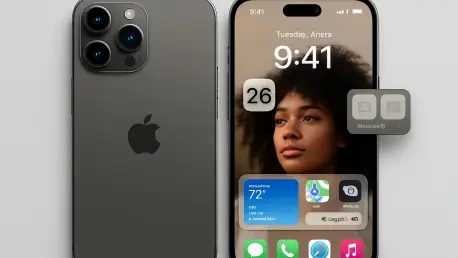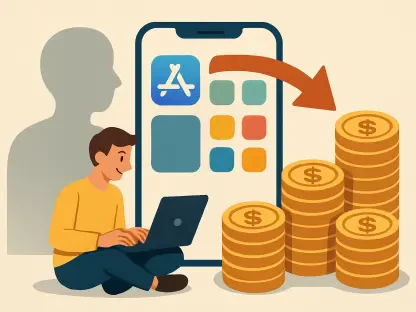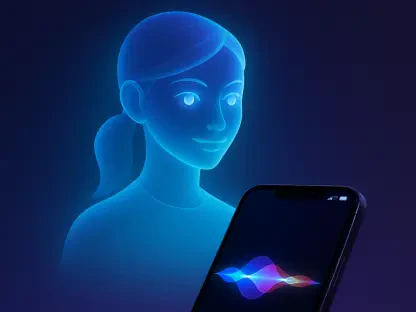As Apple enthusiasts eagerly anticipate the next big leap in mobile technology, the buzz surrounding the latest operating system update has reached a fever pitch, promising to redefine how users interact with their devices and setting new standards for innovation. With a slated release this fall, this update is poised to bring a wave of innovation to compatible iPhones and iPads, blending cutting-edge design with practical functionality. The excitement is palpable as details emerge about which devices will support the new software and what transformative features await. This news has sparked discussions among tech communities about the balance between embracing modernity and the inevitable phasing out of older hardware. Beyond mere aesthetics, the update aims to address modern user needs, from seamless communication to enhanced security. For those looking to stay ahead of the curve, understanding the scope of this release is essential, whether planning to test the beta or awaiting the official rollout.
Device Compatibility and Support
Which iPhones Make the Cut?
A significant aspect of the upcoming software release is the list of supported devices, marking a shift from previous years where broader compatibility was the norm. Notably, iPhones from 2019 onward, starting with the iPhone 11 series and extending to the anticipated iPhone 16 series, are confirmed to run the new system. This decision ensures that users with relatively recent models can experience the full range of enhancements without performance hiccups. However, this update also signals the end of support for several models launched in 2018, including the iPhone XR, XS, and XS Max. This move aligns with Apple’s strategy to optimize software for newer hardware, pushing the boundaries of what these devices can achieve. For many, this serves as a nudge to consider upgrading, especially as staying on outdated software can limit access to critical updates and new app functionalities. The focus on newer devices underscores a commitment to delivering a consistent and robust user experience across the board.
Equally important is the impact on iPad users, with compatibility extending to models like the iPad Pro (3rd generation and later), iPad Air (3rd generation and later), and iPad mini (5th generation and later) for the parallel iPadOS update. This selective compatibility reflects a broader industry trend where technological advancements often outpace the lifespan of older hardware. For those holding onto devices from a few years back, the lack of support may pose challenges, particularly in terms of security vulnerabilities and app compatibility. Apple’s approach aims to balance innovation with practicality, ensuring that the majority of active users can benefit from the latest features while gradually phasing out support for aging technology. This transition, though necessary for progress, prompts a reevaluation of device longevity and the timing of upgrades for many in the user base. Understanding these compatibility criteria is crucial for planning ahead and making informed decisions about hardware investments.
Implications for Older Device Owners
For owners of iPhones and iPads that fall outside the compatibility range, the implications of this update are far-reaching and warrant careful consideration. Devices like the iPhone XR and XS series, once flagship models, will no longer receive the latest software, meaning they miss out on vital security patches that protect against emerging threats. This exclusion can expose users to potential malware risks and compatibility issues with newer applications that require updated operating systems. The decision to continue using an unsupported device could compromise both data safety and the overall user experience, as developers increasingly tailor their apps for the latest software versions. This scenario highlights the importance of weighing the cost of an upgrade against the risks of remaining on outdated technology, especially for those who rely heavily on their devices for daily tasks.
Beyond security concerns, the lack of access to new features can create a sense of obsolescence among users of older models, potentially impacting their engagement with Apple’s ecosystem. While some may choose to stick with their current devices for budgetary or personal reasons, others might see this as an opportunity to explore newer models that promise enhanced capabilities and longevity. Apple’s pattern of discontinuing support for older hardware is not new, as seen in past updates where models like the iPhone 8 were phased out. This consistent approach serves as a reminder of the tech lifecycle, where rapid advancements necessitate periodic upgrades to maintain functionality and relevance. For affected users, exploring trade-in options or planning for a future purchase could mitigate the challenges posed by this transition, ensuring they remain connected to the evolving digital landscape without unnecessary risks.
Innovative Features and Enhancements
A Visual and Functional Overhaul
Among the most anticipated aspects of the new software update is a striking design transformation dubbed “Liquid Glass,” which promises to redefine the visual experience on compatible devices. This overhaul introduces a refreshed home screen with updated app icons, expanded dark mode options, and a unified aesthetic that extends across Apple’s operating systems. The goal is to create a seamless and visually appealing interface that enhances user interaction, making everyday navigation more intuitive and engaging. This design shift is not merely cosmetic; it reflects a deeper intent to harmonize the look and feel of Apple’s ecosystem, ensuring consistency whether users are on an iPhone or iPad. Such attention to detail in design underscores a commitment to elevating the user experience beyond mere functionality, setting a new standard for mobile interfaces.
In addition to the aesthetic upgrades, functional improvements are poised to make a significant impact on how users interact with their devices daily. A redesigned Phone app offers streamlined access to contacts and call features, simplifying communication in a fast-paced world. Meanwhile, the introduction of Live Translate facilitates real-time conversation translation, breaking down language barriers and fostering global connectivity. Another standout is the Polls feature within the Messages app, designed to ease group decision-making by allowing users to create quick surveys among friends or colleagues. These enhancements collectively cater to modern communication needs, emphasizing accessibility and efficiency. By integrating such tools, Apple demonstrates a forward-thinking approach to software development, ensuring that users have the resources to stay connected and productive in an increasingly digital environment.
Balancing Innovation with Practicality
The rollout of these innovative features comes with a dual focus on pushing technological boundaries while addressing practical user considerations. The public beta, already available for testing on compatible devices, offers an early glimpse into the update’s potential, though it carries inherent risks such as bugs and instability. Users are advised to approach beta testing with caution, backing up data and understanding that not all features may perform as intended in this preliminary stage. The official release, expected around mid-September alongside the debut of new iPhone models, will likely provide a more polished experience. This timeline aligns with Apple’s traditional launch window, often confirmed during major events like the iPhone 17 announcement, giving users a clear expectation of when to prepare for the full rollout.
Moreover, the balance between cutting-edge advancements and the reality of device obsolescence remains a key theme in this update. While features like Live Translate and the Liquid Glass design are set to captivate users, the exclusion of older models from compatibility lists serves as a pragmatic reminder of the tech industry’s rapid evolution. This dynamic pushes users to adapt, whether by upgrading hardware or exploring alternative solutions to maintain security and functionality. Apple’s strategy reflects a broader trend where innovation drives progress, but not without trade-offs for those with aging devices. As the release approaches, staying informed about these developments will be crucial for users aiming to maximize their experience while navigating the challenges of transitioning to the latest software. This update, with its blend of visionary design and practical tools, sets the stage for a significant shift in mobile technology.
Reflecting on a Milestone Update
Looking back, the announcement and rollout of this major software update marked a pivotal moment in Apple’s ongoing mission to blend innovation with user-centric design. The introduction of transformative elements like the Liquid Glass interface and features such as Live Translate redefined expectations for mobile operating systems. Compatibility decisions, while excluding older models like the iPhone XR and XS, highlighted the inevitable progression of technology, urging users to adapt to newer hardware for optimal security and performance. The mid-September launch, paired with the public beta phase, provided ample opportunity for early adopters to engage with the update, despite the associated risks. For those navigating this transition, the next steps involved assessing device status and considering upgrades to fully embrace the enhanced ecosystem. Exploring trade-in programs or planning for future purchases emerged as viable paths forward, ensuring users remained aligned with Apple’s evolving landscape while safeguarding their digital experience for years to come.









